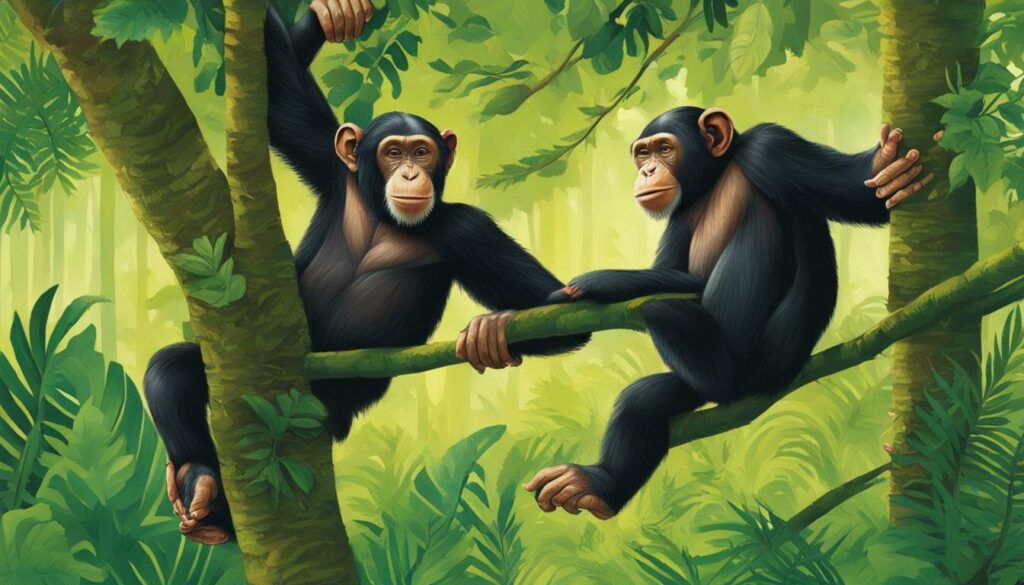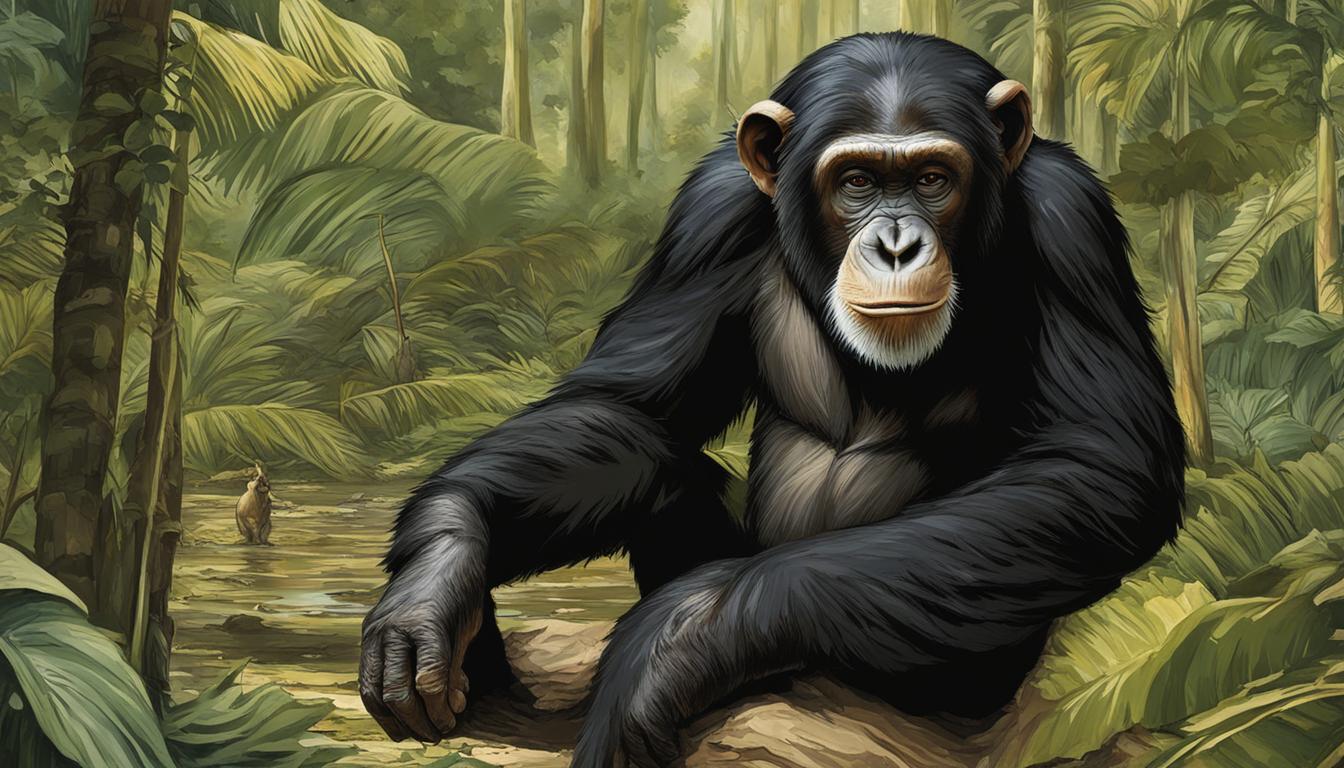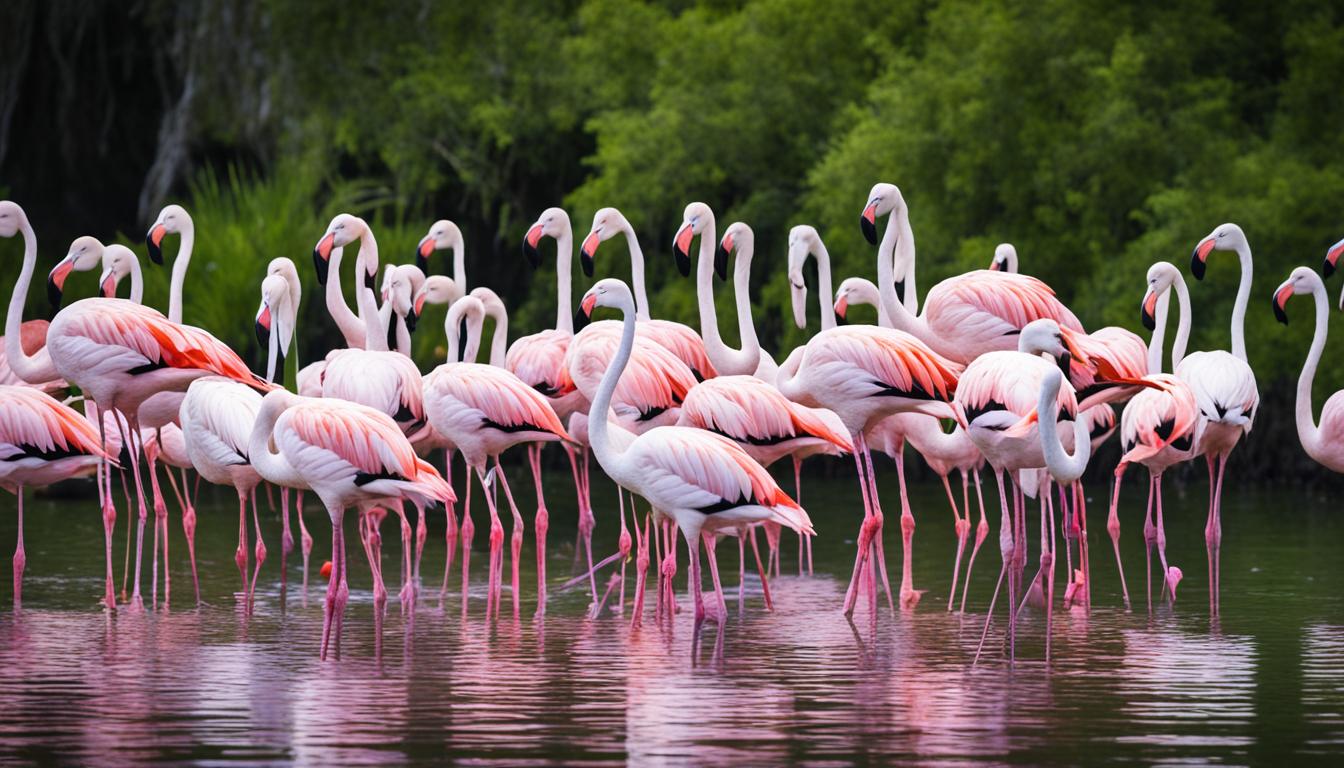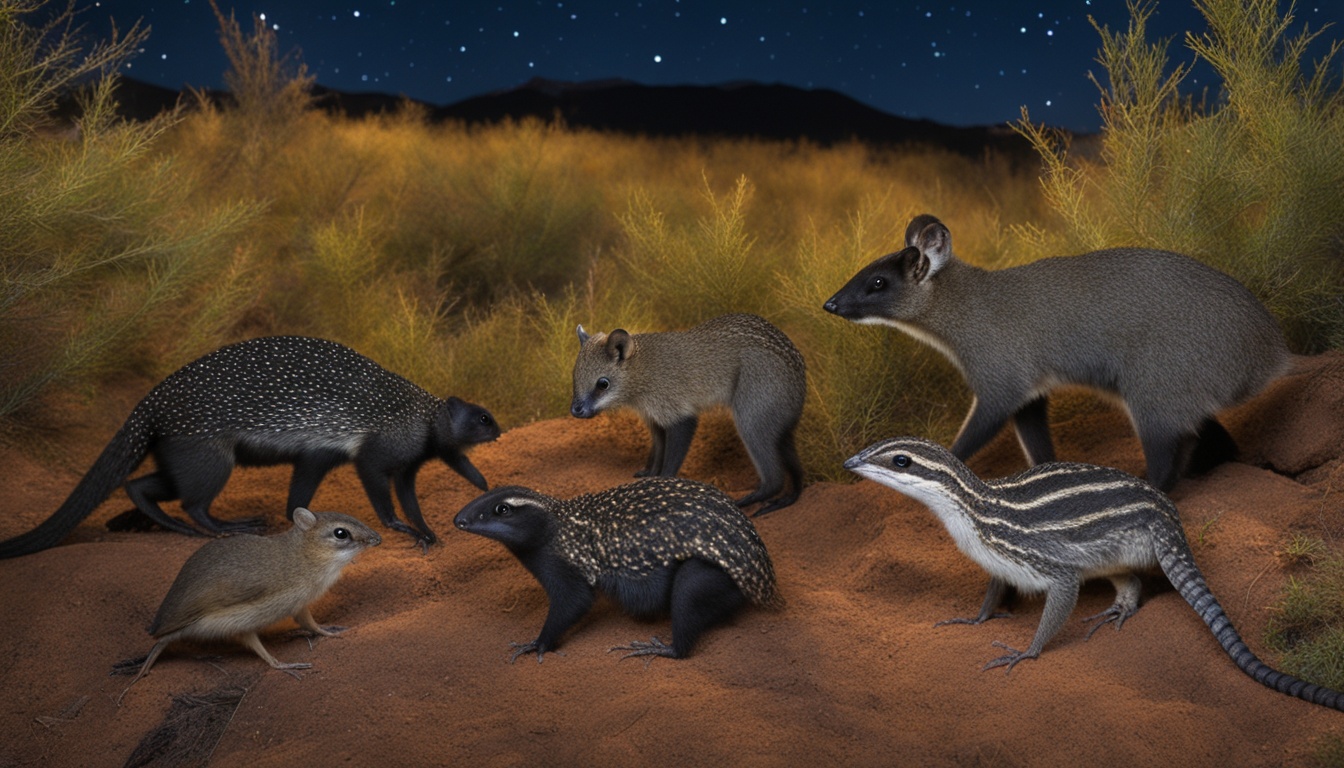When it comes to protecting chimpanzees, a variety of conservation efforts are implemented to safeguard these incredible creatures and their habitats. By addressing the threats they face and promoting sustainable practices, we can ensure the long-term survival of chimpanzee populations.
One of the primary objectives of chimpanzee conservation efforts is to tackle the key threats they encounter, such as habitat loss, diseases, and hunting. These threats have led to a decline in their populations and place them at risk of extinction. By taking decisive action, we can mitigate these dangers and create a better future for chimpanzees.
To protect chimpanzees effectively, habitat preservation is crucial. This involves establishing protected areas like national parks and implementing sustainable forest management practices. By conserving their natural habitats, we provide chimpanzees with the resources they need for food, shelter, and survival.
Alongside habitat preservation, anti-poaching initiatives play a vital role in protecting chimpanzees from hunting and illegal trade. By strengthening law enforcement, increasing patrols, and raising awareness, we can minimize poaching activities and ensure the safety of chimpanzees in the wild.
Engaging local communities is also a key aspect of chimpanzee conservation. By involving communities in conservation efforts, promoting awareness, and providing opportunities for education and sustainable livelihoods, we can reduce human-chimpanzee conflict and foster support for conservation initiatives.
Preventing the transmission of diseases is another critical component of chimpanzee conservation efforts. By implementing measures such as health education programs, vaccination awareness, and visitor restrictions, we can reduce the risk of disease transmission from humans to chimpanzees, safeguarding their health and well-being.
Lastly, international collaboration and policy development are vital for the success of chimpanzee conservation. Organizations like the Great Ape Survival Project (GRASP) work to develop global strategies and coordinate conservation efforts, ensuring a unified approach to protecting chimpanzees and their habitats.
By implementing these key conservation efforts, we can protect chimpanzees, preserve their habitats, and secure a brighter future for these magnificent creatures. Let’s work together to safeguard their survival and ensure their continued existence for generations to come.
Threats to Chimpanzees
Chimpanzees, one of our closest living relatives, face numerous threats that put their survival at risk. Three key factors that endanger chimpanzees are habitat loss, disease, and hunting.
Chimpanzees are endangered primarily due to habitat loss caused by deforestation for human settlements and agriculture. The rapid expansion of human activities has resulted in the destruction and fragmentation of their natural habitats. As a result, chimpanzees are forced into smaller and isolated areas, leading to a decline in their populations.
Moreover, disease poses a significant threat to chimpanzees. They are susceptible to various illnesses, including zoonotic diseases transmitted by humans. Close proximity to humans, whether through research, tourism, or encroachment, increases the risk of disease transmission, which can have devastating consequences for chimpanzee populations.
The third major threat to chimpanzees is hunting. Chimpanzees are hunted for bushmeat, driven by both subsistence and commercial purposes. Unsustainable hunting practices result in the illegal trade of chimpanzee meat, further contributing to their population decline.
In summary, habitat loss, disease, and hunting pose significant challenges to the conservation of chimpanzees. Urgent action is required to address these threats and ensure the survival of these remarkable animals.
Habitat Preservation
Preserving chimpanzee habitats is a critical component of conservation efforts aimed at protecting these magnificent creatures. By establishing and managing protected areas, such as national parks, we can create safe havens for chimpanzees to thrive.

These conservation projects focus on ensuring the sustainable use of forests, which are vital for chimpanzees’ survival. Forests provide them with food, shelter, and the opportunity for social interaction within their communities.
By preserving their habitats, we can:
- Protect chimpanzees from the negative impact of habitat loss and fragmentation
- Provide them with ample resources, including fruits, nuts, leaves, and insects
- Support their complex social structures and behaviors
- Allow them to continue their crucial role as seed dispersers, aiding in forest regeneration
Preserving chimpanzee habitats is not only beneficial for the species itself, but it also contributes to the overall health of ecosystems. It helps maintain biodiversity, provides ecological balance, and supports the well-being of other flora and fauna that share these habitats.
Benefits of Habitat Preservation for Chimpanzees
| Benefits | Description |
|---|---|
| Protection from habitat loss and fragmentation | Preserving intact habitats ensures that chimpanzees have sufficient space to roam and access important resources. |
| Availability of resources | Preserved habitats provide chimpanzees with a diverse range of food sources essential for their nutrition and overall health. |
| Social interaction | Chimpanzees rely on intact habitats to maintain their complex social structures and engage in vital social behaviors. |
| Seed dispersal | As they move throughout their habitat, chimpanzees aid in the dispersal of seeds, promoting forest regeneration and biodiversity. |
It is crucial to continue investing in habitat preservation to ensure the long-term survival of chimpanzees and the preservation of our natural heritage. By safeguarding their habitats, we can help these remarkable creatures flourish and maintain the delicate balance of our ecosystems.
Anti-Poaching Initiatives
To protect chimpanzees from hunting and the illegal wildlife trade, various anti-poaching initiatives have been implemented. These conservation actions for chimpanzees are crucial in ensuring their survival and preventing further population decline. Anti-poaching efforts involve a range of strategies aimed at deterring poachers, strengthening law enforcement, and raising awareness about the importance of conserving chimpanzees.
An integral part of anti-poaching initiatives is the reinforcement of law enforcement measures. By collaborating with local authorities and wildlife protection agencies, efforts are made to apprehend and prosecute those involved in illegal activities targeting chimpanzees. Increasing patrols and surveillance in protected areas also serve as a deterrent to poachers.
Raising awareness plays a vital role in protecting chimpanzees. By educating local communities, tourists, and the general public about the conservation significance of chimpanzees, initiatives aim to promote a positive attitude towards these great apes and discourage the demand for their body parts in the illegal wildlife trade.
Through public outreach programs, media campaigns, and community engagement, initiatives to save chimpanzees garner support, both locally and internationally. By highlighting the unique ecological value of chimpanzees and their importance in maintaining healthy ecosystems, these efforts seek to foster a sense of responsibility and advocacy for their conservation.
Furthermore, collaboration with local communities is key to the success of anti-poaching initiatives. By involving community members in conservation efforts, initiatives can help address the underlying causes of poaching, such as poverty and lack of alternative livelihood options. Providing sustainable income-generating opportunities and promoting eco-tourism can contribute to the establishment of a mutually beneficial relationship between chimpanzee conservation and local communities.
Table: Overview of Anti-Poaching Initiatives for Chimpanzee Conservation
| Initiative | Description |
|---|---|
| Strengthening law enforcement | Collaborating with local authorities to enforce wildlife protection laws and prosecute offenders. |
| Increased patrols and surveillance | Deploying dedicated teams to conduct regular patrols in protected areas, deterring poachers and monitoring chimpanzee populations. |
| Public awareness campaigns | Educating local communities, tourists, and the general public about the importance and conservation value of chimpanzees, discouraging poaching and supporting conservation efforts. |
| Community engagement | Involving local communities in conservation activities, providing sustainable livelihood opportunities, and promoting eco-tourism. |
Community Engagement and Education
Engaging local communities and raising awareness about the value of chimpanzees is essential for their conservation. By involving communities in conservation efforts, we can ensure long-term success in our strategy for chimpanzee conservation.
One of the key strategies for chimpanzee conservation is the implementation of community-based conservation programs. These programs focus on empowering local communities to take an active role in protecting chimpanzees and their habitats.
“The involvement of local communities is critical for the success of conservation initiatives.”
One aspect of these programs is to provide healthcare services to the communities living in or near chimpanzee habitats. By improving access to healthcare, we can help reduce the spread of diseases between humans and chimpanzees, ultimately contributing to the overall well-being of both populations.
Education also plays a crucial role in community engagement and chimpanzee conservation. By raising awareness about the importance of preserving chimpanzees and their habitats, we can foster a sense of responsibility and stewardship among community members.
Through educational initiatives, such as workshops and signage, we can educate people about the threats facing chimpanzees, their ecological role, and the benefits of conservation. This knowledge empowers individuals to make informed choices and take actions that protect chimpanzees.
Additionally, community-based conservation programs provide opportunities for sustainable livelihoods. By supporting alternative income-generating activities, such as eco-tourism or agroforestry, we can reduce the reliance on activities that harm chimpanzee populations, such as illegal hunting or deforestation.
By actively engaging local communities and implementing education and conservation programs, we can collectively work towards the conservation and protection of chimpanzees for future generations.
Disease Prevention
Preventing the transmission of diseases from humans to chimpanzees is crucial for their health and well-being. By implementing various measures, we can reduce the risk of zoonotic disease transmission and protect the chimpanzee population.
Education and Awareness
Educating tourists about the importance of appropriate vaccinations and handwashing before entering chimpanzee habitats is essential. By raising awareness among visitors, we can ensure that they understand the significance of these preventive measures and actively participate in disease prevention.
Limiting Visitor Numbers
Limiting the number of visitors to chimpanzee habitats can also help reduce the risk of disease transmission. By controlling the human-chimpanzee interaction and minimizing contact, we can minimize the potential for diseases to spread between the two populations.
Health Education Programs for Local Communities
Health education programs targeted at local communities play a crucial role in mitigating the spread of diseases. These programs help community members understand the importance of disease prevention practices and provide them with the necessary knowledge and resources to safeguard the well-being of both humans and chimpanzees.
| Disease Prevention Measures | Impact |
|---|---|
| Educating tourists about vaccinations and handwashing | Increases awareness and adoption of preventive measures |
| Limiting visitor numbers | Reduces the potential for disease transmission |
| Health education programs for local communities | Empowers communities to actively participate in disease prevention |
International Collaboration and Policy
Conservation policies for chimpanzees and a global survival strategy for great apes are crucial for their long-term protection. International collaboration plays a vital role in developing and implementing these policies. Organizations like the Great Ape Survival Project (GRASP) are at the forefront of these efforts, working to create global strategies and coordinate conservation initiatives.
By fostering collaboration among stakeholders, including governments, conservation organizations, and local communities, we can ensure a more comprehensive approach to chimpanzee conservation. This includes developing stronger protection policies and enforcement mechanisms to safeguard their habitats and reduce threats such as hunting and illegal trade.
To effectively conserve chimpanzees, it is crucial to tailor conservation approaches to local circumstances. Integrated strategies that consider the needs and challenges of specific regions can have a more significant impact on their survival. This approach involves working closely with local communities to promote sustainable livelihoods while also raising awareness about the importance of chimpanzee conservation.
Through international collaboration and the development of comprehensive conservation policies, we can create a global survival strategy for great apes. This strategy not only focuses on the preservation of chimpanzee populations but also addresses the conservation needs of other great ape species. By working together, we can strive towards a future where great apes thrive and their habitats are protected for generations to come.
Do Conservation Efforts Affect the Territorial Behavior of Chimpanzees?
Conservation efforts can impact the chimpanzee territorial establishment. By protecting their natural habitat and creating sanctuary areas, conservationists can limit human encroachment on chimpanzee territories. This can help reduce territorial threats and stress on the chimpanzee populations, ultimately leading to healthier and more stable territorial behaviors.
Do Conservation Efforts Affect Chimpanzee Territory Establishment and Defense?
Conservation efforts directly impact chimpanzee territorial behavior. By preserving natural habitats, such as forests and grasslands, conservation initiatives enable chimpanzees to establish and defend their territories. Without these efforts, human encroachment and habitat destruction would severely diminish chimpanzee territory sizes and disrupt their natural territorial behavior.











